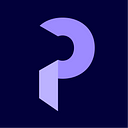Why You Shouldn’t Feel Insecure About Transitioning Into Design
How your non-design past can set you apart from other designers
For those transitioning from a non-design background and into design, it can be easy to fall into the trap of thinking that if you didn’t come from a design-related background that you’re not going to find success in design.
Samuel Harper, a marine biologist who transitioned into UX design, also thought this way when he first started looking for jobs in the UX design field. Harper and Stella Guan, the founder and CEO of Path Unbound, sat down and had a chat about what it was like to transition from marine biology and into UX design.
Harper had multiple changes in his educational and career path until he found UX design. He enrolled in a design bootcamp and then landed his first UX job 7 months after he finished his bootcamp program.
Getting Your Foot In The Door First
By applying to over 500 jobs, he took away several important lessons from his experiences. He learned about applicant tracking systems and how bots will sift through the hundreds of applicants and only select the resumes that had keywords that matched the job description.
He also realized the importance of getting his first few years of design experience and that he could also apply outside of highly saturated tech markets like San Francisco. The competition in such locations is high and even experienced designers may have difficulty getting hired in those areas.
Don’t be afraid to apply outside of famous tech markets. Be open to possibilities.
Don’t be afraid to apply outside of famous tech markets. Be open to possibilities.
One of the jobs he applied to as a “throw-away”, since it wasn’t at a tech-savvy location, actually had people who were interested in him and they gave him an offer in the end. After his first design job, the whole job hunting process became easier since he already got his foot in the door.
How Your Past Skills Can Be Applied To Design
Harper couldn’t find jobs as a marine biologist after finishing his degree in marine biology and went through a similar situation when he first started to look for UX design jobs.
He also didn’t feel like he qualified for many UX designer positions due to coming from a “logical” field of science, and felt like his non-design experiences and education held him back as a candidate.
However, the research and problem solving skills he developed from marine biology — from learning how to set up studies, looking at sampling bias and not taking data at face value — made him stand out from other candidates and he was hired because of this.
He advises to those looking to transition into design that as long as they understand what values they bring to UX from their previous fields that it doesn’t matter what background they came from.
Designers’ previous experiences and work shouldn’t be thought of as a shortcoming, but rather as a strength.
Designers’ previous experiences and work shouldn’t be thought of as a shortcoming, but rather as a strength.
Don’t Make Your Case Studies Sound Like A Movie Without Any Conflicts
Guan and Harper also discussed the importance of storytelling for designers. Harper mentioned that he sees too many portfolios where designers want to show only perfection when in reality, employers want to see conflict, problems and what designers did to overcome them. A story isn’t complete (nor is it as interesting) without problems.
Nobody wants to read a case study that sounds like a 2 hour movie with no conflict.
Nobody wants to read a case study that sounds like a 2 hour movie with no conflict.
Making Yourself Known As A Designer
In his time outside of work, Harper publishes articles and likes to go on podcasts and livestreams to talk about UX design.
He recommends anyone looking to get started on personal branding and content creation to understand who they are and how they normally like to express themselves before getting themselves out there.
This can be through writing articles, going on podcasts, posting YouTube videos and attending design events. It’s also important to utilize LinkedIn to network and find recruiters, hiring managers and fellow designers. From his experiences, LinkedIn made it easier to build genuine connections with employers and recruiters and to make himself easier to find.
Designers transitioning into design, like Harper, are set up with relevant skills from their previous fields — they just have to know how to use them in design. They can use their differences as a selling point for employers and show what makes them special and desirable as a candidate.
Path Unbound is a design school founded by designers with an affordable and customizable curriculum for career transitioners looking to break into design. We provide an end-to-end design certificate program “School of Design” with university-level design professors as instructors with a flexible completion timeline in a guided approach.
Our built-in portfolio training program “Portfolio School” that is included for free for “School of Design” students provides intensive, hands-on portfolio building instructions so that students graduate with outstanding projects, custom portfolio sites, and a strong personal brand, ready to stand out in the competitive job market.
Our courses within the certificate program can be taken standalone, as can Portfolio School be taken individually as a program for students who desire to test out the water or are at a different stage in their design learning journey.
We provide generous scholarships for qualified students as well as flexible financing for students gloablly. APPLY TO ENROLL Today!
